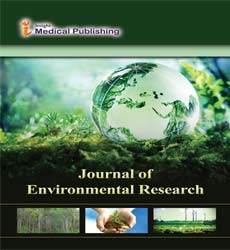Strategies for the Symbiotic Development of Renewable Power and Nuclear Power under the Renewable Energy 3020 Policy in South Korea: Technical Solutions for Expanding Renewable Power Generation
Abstract
In recent years, the Korean government has implemented the ‘Renewable Energy 3020’ policy to substantially expand renewable energy without the inclusion of nuclear and coal-fired power plants. Korean government needs to consider the effects of technological innovation, changes in market, and the possibility of social consensus deduction. The Wien Automatic System Planning (WASP) model was used to verify the implementation of the long-term power development plan within specified constraints. The extension methodology of renewable power equipment was verified using the WASP model, which provides the basis for the application of scientific logic and suggestion to drive the national energy transition policy efficiently. Currently, technological and economic uncertainties related to nuclear and renewable power generation need to be investigated. Thereafter, energy transition needs to be examined to promote an alternative energy policy considering the technological innovation and the social consensus. The national energy transition policy will likely succeed, if based on the accurate technical planning and evaluation of the symbiotic strategies for nuclear and renewable power generation. In addition, to achieve the goal of expansion of renewable power generation to 20% of the total power by 2030, an additional cost of approximately 144 billion KRW will be incurred, according to WASP model simulations not considering transmission and distribution networks and backup generator installation costs [1]. In this study, it was found that the construction of a win-win structure for renewable and nuclear power generation has been driven by multiple angles of logic based on energy conversion plans related to the ‘Renewable Energy 3020’ policy; however, there is a limit to valid possibilities if existing research methodologies are used. This study is lacking in that it does not review humanities and social scientific logic with respect to the energy market and industrial structure. This study suggests a mutually beneficial role promotion through a new complex scientific logic that considers wider economic and social policies. To promote energy conversion centered on renewable energy using the existing methodology, one must be aware that there are limits to utilizing them to formulate long-term power supply plans. Particularly, in the case of a mid-term plan within 15 years, the need to develop a logic for improving upon and complementing existing methodologies, such as WASP, with the aim of minimizing costs by reducing the planning period, is urgent. Therefore, there is a need to review international joint research projects. The energy conversion policy in this paper recommends a long-term vision of at least 30 years. In the short- and mid-terms the second-best energy conversion policy should be accepted, considering execution efficiency. To do this, the best technologies in this field need to be reviewed because the substantial part of achieving the ‘Renewable Energy 3020’ policy goal involves building facility and capacity. Also, only a combination of energy saving and variable renewable energy (VRE) can achieve the goal; alternative plans may be reviewed.
Open Access Journals
- Aquaculture & Veterinary Science
- Chemistry & Chemical Sciences
- Clinical Sciences
- Engineering
- General Science
- Genetics & Molecular Biology
- Health Care & Nursing
- Immunology & Microbiology
- Materials Science
- Mathematics & Physics
- Medical Sciences
- Neurology & Psychiatry
- Oncology & Cancer Science
- Pharmaceutical Sciences
